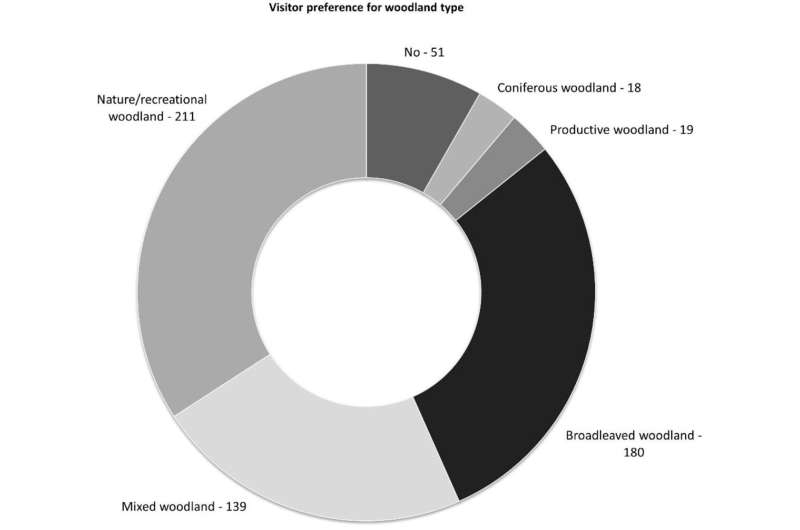This article has been reviewed according to Science X's editorial process and policies. Editors have highlighted the following attributes while ensuring the content's credibility:
fact-checked
trusted source
proofread
Study shows more woodlands will not impact tourism

Hiking, cycling, climbing and boating. When we take time off from work or school, we like to go out into nature. The landscape in other words play an important role for our vacations. To promote biodiversity and carbon sequestration there is a focus on planting more trees, especially in upland areas such as Howgill Fells.
The Howgill Fells is located in the north-west of England and is known for its soft, rolling and open landscape. It is a popular area for tourists seeking the outdoors and hill-walking in particular. But how will it affect tourism, if the area was to be covered with more woodlands?
"There are many opinions on woodlands in these popular tourist areas, which is why we found this study important to conduct," says Postdoc Sara Vangerschov Iversen from the Department of Agroecology, who has conducted a study on how planting more woodlands affect tourists' desire to visit Howgill Fells, but according to the Postdoc it could have been any upland area in the UK.
Concerned about income
The English uplands have largely been defined as "less favored areas," because they are areas that are challenged in terms of food production. Less favored areas are the EU classification for socially and economically disadvantaged areas.
"The uplands are used for sheep farming, but this is an industry that is changing and experiences a decline. Therefore, these areas are often perceived to be ideal for woodland creation," says Iversen.
However, not everyone is happy with the idea of more woodlands. There is concern among local people that more woodlands will mean fewer tourists, and fewer tourists means lower earnings.
"Farmers in these areas have developed their agricultural business to include not only farming, but also farm shops and B&Bs. In other words, there is a big interest in how many tourists come and visit the area. So, it is also important for those who manage the landscape to understand whether woodland creation negatively affects the people who come and visit," explains Iversen.
No problem, as long as there is still a view from the top
Aproximately 500 tourists participated in the study, in which researchers investigated whether more woodlands would play a role in regard to them visiting an area such as Howgill Fells.
"There are many voices in this debate about more woodlands or not. What we can contribute with here, is more evidence directly from tourists. We have talked to tourists and explored whether woodlands in these areas actually affect their choice of destination," says Iversen.
In the study, the current state of 1.5% woodland within the Howgill Fells were compared to a number of scenarios for increasing woodlands with 10%, 25%, 50%, 75% or 100%
"The overall result of our survey is that increasing woodland cover does not affect tourists. The vast majority responded that an increased amount of forest would have no impact on whether they would visit the area. On the other hand, we can see that the number of people who would still visit decreased slightly the more forest was planted, but even at 75% and 100% scenario, still the majority of respondents answered that it makes no difference to them," says Iversen.
However, the study shows that even though tourists would not mind spending their vacation activities in forests, they still prefer to have a view from the mountain top.
"It is a fairly small study, we have talked to approx. 500 tourists in a specific location in the UK, but the focus has been on the tourist voices. Locally, of course, it is a very useful result, here is evidence that you can plant woodlands without negatively affecting tourism. It is also a study that is useful in rest of the UK, where there is a focus on woodland creation in similar upland areas. Here is evidence that it will not affect tourism as much as feared," says Iversen.
More information: Sara V. Iversen et al, Impacts of woodland planting on nature-based recreational tourism in upland England—A case study, Landscape and Urban Planning (2022). DOI: 10.1016/j.landurbplan.2022.104587
Provided by Aarhus University

















